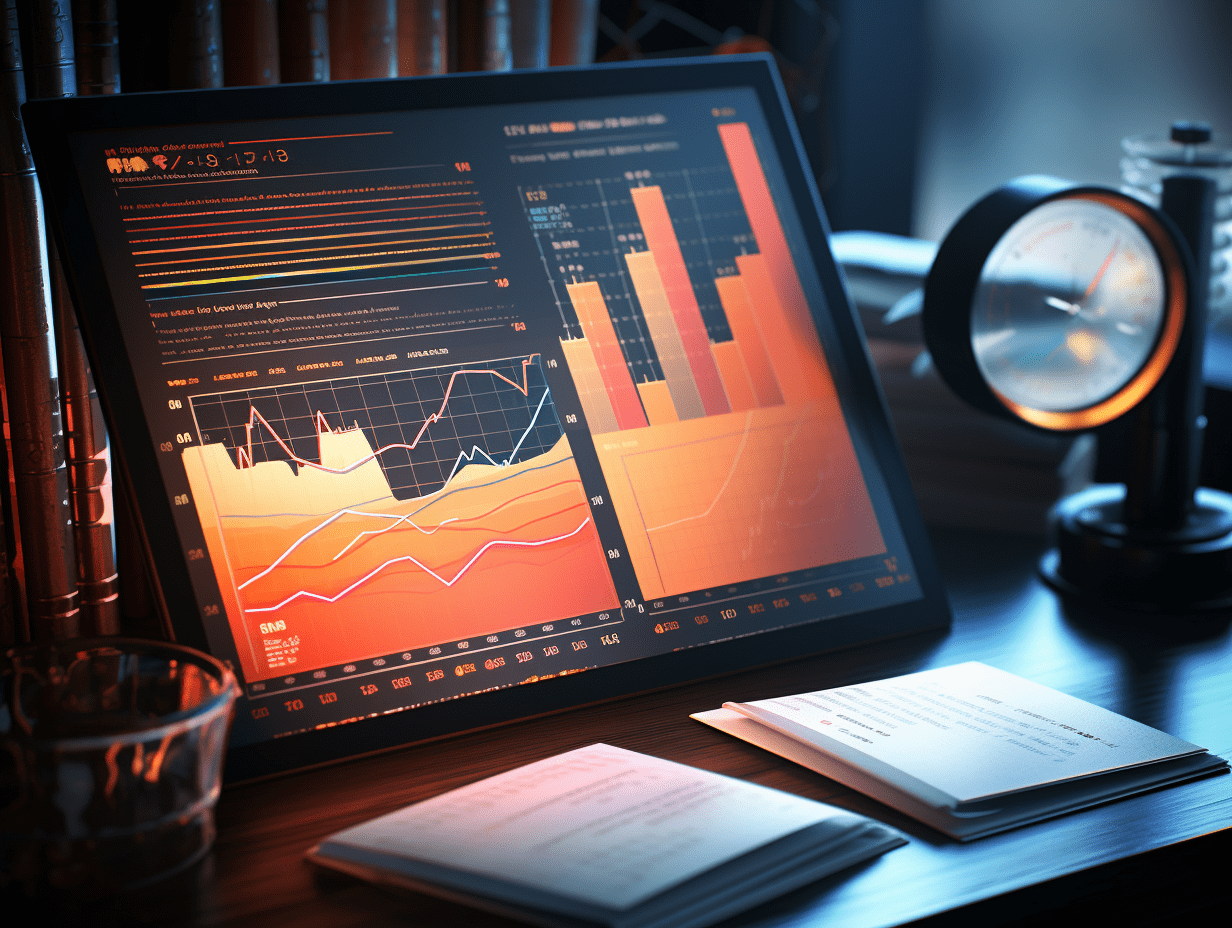Tianfeng Metal and Materials' 2025 strategy: The great power game in a loose monetary cycle.
In the context of loose monetary policies and anti-globalization trends, the characteristics of scarcity will become more prominent, serving as an important support for great power competition, while also creating necessary conditions for a bull market in commodities.
Tianfeng releases a research report stating that from the global commodity cycle perspective, the current world geopolitical landscape is becoming more uncertain, with frequent local conflicts and major power games potentially becoming the theme of international relations. Scarcity is the inherent gene of resource commodities, under the constraints of declining capital expenditure and resource depletion, in the background of loose monetary policy and anti-globalization, the era characteristic of scarcity will become more prominent, becoming an important support for major power games and creating necessary conditions for a bull market in commodities.
Looking ahead to 2025, when classifying various metals, pricing factors will continue to deepen, with the possibility of gold prices fluctuating higher. The direction of gold prices moving upwards is more probable, but the journey may be more turbulent than in 2024. Besides being bullish on gold prices, there is also optimism for the recovery of gold stocks, as stock prices have been significantly discounted compared to commodity prices for a long time. Although there may be a lack of strong narratives on the demand side for copper in the short term, demand from industries like electricity and new energy will provide a support for copper demand, with a potential downside to the prices but an expectation for demand flexibility upwards. For global electrolytic aluminum supply growth in 25 years, the probability likely won't exceed 2%, significantly lower compared to previous years, due to the large amount of new capacity for alumina and electrolytic aluminum back-end processes.
Tianfeng's main points are as follows:
What are the typical characteristics of historical bull markets in non-ferrous metals?
Non-ferrous metals (represented by industrial metals) as globally priced commodities, have both financial and commodity attributes, with prices determined by global macro and fundamental factors. Reviewing the history of A-share non-ferrous equity markets from 2000 to the present, there have been 5 big bull markets (2006.1-2007.10, 2008.12-2010.10, 2014.6-2015.5, 2016.2-2017.9, 2020.4-2021.8). Each period faced significant differences in the macroeconomic environment but also had similarities, such as resonating macro (inflation/ liquidity) and fundamentals, with a hierarchy in pricing weights:
In 2006-2007, strong Chinese demand led to a supply-demand imbalance in non-ferrous metals, the fundamental reason behind the formation of the super bull market in non-ferrous metals. It was accompanied by a continuous depreciation of the US dollar in the same period, excess liquidity in global capital markets, and the scarcity of non-ferrous metals being highlighted, with their financial attributes driving upward prices. In 2008, to counter the financial crisis, China introduced a 4 trillion RMB stimulus to boost domestic demand, along with significant domestic and foreign liquidity easing, leading to another round of price increases in non-ferrous metals. In 2014-2015, under the "Leverage Bull" and "Reform Bull" market, A-shares were broadly up. In 2016-2017, the market was led by supply-side reform. In 2020, to counter the impact of the pandemic, the US implemented quantitative easing, issuing special COVID-19 bonds domestically, and selectively reducing reserve requirements and interest rates, meanwhile, emerging demands for new energy represented by new energy continued to grow.
How is the non-ferrous market different from previous years in 2024?
In 2024, non-ferrous metals, represented by copper and gold, underwent a broad market trend. In the first half of the year, global macro and fundamentals resonated, leading to a sharp rise in copper prices, while gold prices remained strong throughout the year. Even after the US Federal Reserve cut interest rates, the prices of gold remained resilient, deviating from the macro and fundamental pricing.
Tianfeng believes that the significant difference in this round of non-ferrous market compared to previous ones is as follows: In an era of increased global uncertainty combined with excessive currency issuance, the value of commodities is being re-evaluated. First, the supply is facing rigid contraction, and good prices may not stimulate effective supply. In the post-pandemic era, the geopolitical landscape is becoming more uncertain, with frequent local conflicts, intensifying major power games. Inadequate capital expenditure in the early stages of resources, combined with stricter supply constraints, resulting in more cautious investment decisions from entrepreneurs, gradually raising the ratio of expected returns to risks, stimulating effective prices for new supply higher than in previous cycles.
Second, traditional demand paradigms are gradually being broken, with double expectations geographically and structurally. On the geographical front, demand from emerging markets overseas has become one of the main growth drivers, while developed countries represented by the US and Australia are entering a phase of "reindustrialization". In terms of structure, as old and new economic momentum alternates, the volume of old demands represented by real estate remains high, while new demands represented by new energy and AI are growing marginally.
In the current context, how to position the future of non-ferrous commodities?
Tianfeng points out that significant changes have occurred in the macro environment. Firstly, loose currency is entering a long cycle. Since the pandemic, global central banks have generally implemented a new round of loose monetary policies and expansionary fiscal policies to cope with its impact. Recently, with the return of Trump and the realization of "trifecta", the future deficit and inflation expectations of the United States may further rise; while China's December political meeting has clarified a more proactive fiscal policy and moderately loose monetary policy to be implemented in 2025.
Secondly, the intensification of anti-globalization and major power play. From the perspective of the global commodity cycle, the current world geopolitical landscape is becoming more uncertain, with frequent local conflicts, and major power games becoming the theme of international relations. Scarcity is the inherent gene of resource commodities, under the constraints of declining capital expenditure and resource depletion, in the background of loose monetary policy and anti-globalization, the era characteristic of scarcity will become more prominent, becoming an important support for major power games and creating necessary conditions for a bull market in commodities.
Precious metals: Pricing factors will continue to deepen, and gold prices are expected to fluctuate higher in 2025.
In 2024, gold prices rose steadily. Looking back, in an environment of loose money as the backdrop, there were four main themes playing out in a row: frequent geopolitical conflicts leading to safe-haven demand, the end of the high-interest-rate environment deepening the financial attributes of gold, weakening US dollar credit boosting global central bank demand for gold, and expectations surrounding the US election.
Looking ahead to 2025, the pricing factors for gold will further deepen: 1) The trend of anti-globalization will lead to increasing normalization of geopolitical conflicts; 2) US debt balance continues to rise rapidly, further weakening US dollar credit, boosting central bank demand for gold, while the overflow of funds from US bond allocation will also provide momentum for gold prices to rise; 3) Entering an easing cycle, the space for gold price increases is opening up, however, the US's sticky inflation may cause fluctuations in the expected rate of easing, exacerbating gold price volatility.
Overall, the probability of the gold price running upwards is higher, but the journey may be more turbulent than in 2024. Besides being bullish on gold prices, there is also optimism for the recovery of gold stocks, as stock prices...With the long-standing differentiation in commodity prices, there is a significant discount in the stock market compared to commodities. It is recommended to pay attention to: Shandong Gold Mining (600547.SH), Zhongjin Gold Corp., Ltd (600489.SH), Shanjin International Gold (000975.SZ), Zhuzhou Smelter Group (600961.SH), Chifeng Jilong Gold Mining (600988.SH), ZHAOJIN MINING (01818), Hunan Gold Corporation (002155.SZ), CHINAGOLDINTL (02099).Base metals: Supply constraints ensure a price floor, while demand elasticity provides room for price increases.
1) Copper: The growth rate of copper mine supply in 2025 is close to 3%, and with historically low TCRC, smelters may reduce production to partly alleviate electrolytic copper supply pressure. While there is a lack of strong narrative in the short term on the demand side, electricity, new energy, and other demands will provide support for copper demand, with a price floor and expectations for demand elasticity on the upside. Recommended targets to focus on are Jchx Mining Management (603979.SH), MMG (01208), as well as industry leaders Zijin Mining Group (601899.SH, 02899) and CMOC Group Limited (603993.SH, 03993).
2) Aluminum: Constraints on supply will truly come into effect in 2025, with global electrolytic aluminum supply growth likely not exceeding 2%. Given the strong constraints on the supply side, marginal elasticity on the demand side will lead to higher price elasticity. Additionally, in the distribution of industry chain profits, the profit from the 24-year gap between supply and demand in alumina is concentrated mainly in the alumina segment. With a large amount of new alumina production capacity expected to come online in 2025, profits are expected to shift to the upstream bauxite and downstream electrolytic aluminum segments. Recommended targets to focus on are those with high integration levels, such as CHINAHONGQIAO (01378), Aluminum Corporation Of China (601600.SH, 02600), Tianshan Aluminum Group (002532.SZ), as well as Henan Shenhuo Coal & Power (000933.SZ) and Yunnan Aluminium (000807.SZ) benefiting from the drop in alumina prices.
Rare earth permanent magnets: A new cycle is coming amidst industry reshaping.
Rare earths have always been considered the best target for "independent and controllable" resources, and now, with the acceleration of supply optimization, the "Rare Earth Management Regulations" have finally been implemented, and illegal production capacity from waste recycling has been cleared, with further management of imported ores underway. Therefore, the rare earth sector is experiencing a period of resonance between "fundamentals and sentiment," and there is a need to pay sufficient attention to the sector's "strategic opportunities." Simply considering the fundamentals, with the accelerated optimization of the industrial supply pattern and the rapid iteration of demand, the central price of rare earths is expected to continue to rise. Even more importantly, the sustainability of price increases in rare earths and the potential for significant improvement in company profitability are expected. Recommended targets to focus on include China Rare Earth Resources And Technology (000831.SZ, 00769), China Northern Rare Earth (600111.SH), Jl Mag Rare-Earth (300748.SZ, 06680), Ningbo Yunsheng (600366.SH), Yantai Zhenghai Magnetic Material (300224.SZ), etc.
Energy metals: The bottom is now apparent, and the core value of lithium resources will also be "revealed."
Lithium resources have gradually emerged from the industry's downturn, and supply and demand fundamentals continue to improve. Especially considering that prices have declined to around 70,000, there is potential for upward elasticity. Reviewing the previous cycle of lithium prices and stock price trends, stock prices often reflect lithium prices at least 4 months in advance, providing clues to opportunities on the stock side. Looking ahead, one should not overlook the resilience of resources and should focus on the value of lithium as a core asset. It is recommended to focus on: Ganfeng Lithium Group (002460.SZ, 01772), Tianqi Lithium Corporation (002466.SZ, 09696), Sichuan Yahua Industrial Group (002497.SZ), Yongxing Special Materials Technology (002756.SZ), Sinomine Resource Group (002738.SZ), Qinghai Salt Lake Industry (000792.SZ), etc.
Strategic minor metals: The strategic value of rare precious metals is being recognized, and the valuation system is expected to undergo a reshaping.
In a context of deglobalization, strategic minerals, as important raw materials supporting the upgrade of manufacturing and the development of military industries, are gradually being recognized for their strategic and economic value by both the country and the market. Behind the increasing export control of critical raw materials is not only a response to sanctions from Western countries but also a representation of China's national will to support the independent and controllable domestic industry chain.
In the short term, with the strengthening of export controls, overseas metal prices relative to the domestic market show a strong premium certainty. It is recommended to focus on companies with resource layouts overseas, such as Sinomine Resource Group (002738.SZ) and Tibet Huayu Mining (601020.SZ). In the medium to long term, selecting strategic varieties with high demand prosperity and a strong trend towards autonomous control of the downstream industry chain, it is recommended to focus on strategic minor metals related to the semiconductor industry chain: Yunnan Lincang Xinyuan Germanium Industry (002428.SZ) (germanium), Aluminum Corporation Of China (601600.SH, 02600) (gallium), Jinduicheng Molybdenum (601958.SH) + China Tungsten and Hightech Materials (000657.SZ) + Advanced Techn...- ology & Materials (000969.SZ) (Tungsten-molybdenum target material)
- Yunnan Tin Co., Ltd. (000960.SZ) + Guangxi Huaxi Nonferrous Metal (600301.SH) (Tin & Indium)
- Ningxia Orient Tantalum Industry (000962.SZ) (Tantalum-niobium)Risk Warning: Sample selection risk, subjective judgment risk, upstream raw material fluctuation risk, operational risk caused by Sino-US trade friction, risk of production expansion falling short of expectations, risk of new product expansion falling short of expectations, and risk of downstream demand falling short of expectations.
Related Articles

New Stock Preview | The fifth industry cannot resist the worsening of profit end, and the new story of the overseas e-commerce operation of Meetodo is hard to predict?

Tungsten prices have soared by 220% in the year, reaching a record high. Is the most resilient stock, Jiaxin International (03858), potentially having a 10-fold increase in growth space?

Founder: How do you interpret the Bank of Japan raising interest rates again this year?
New Stock Preview | The fifth industry cannot resist the worsening of profit end, and the new story of the overseas e-commerce operation of Meetodo is hard to predict?

Tungsten prices have soared by 220% in the year, reaching a record high. Is the most resilient stock, Jiaxin International (03858), potentially having a 10-fold increase in growth space?

Founder: How do you interpret the Bank of Japan raising interest rates again this year?






